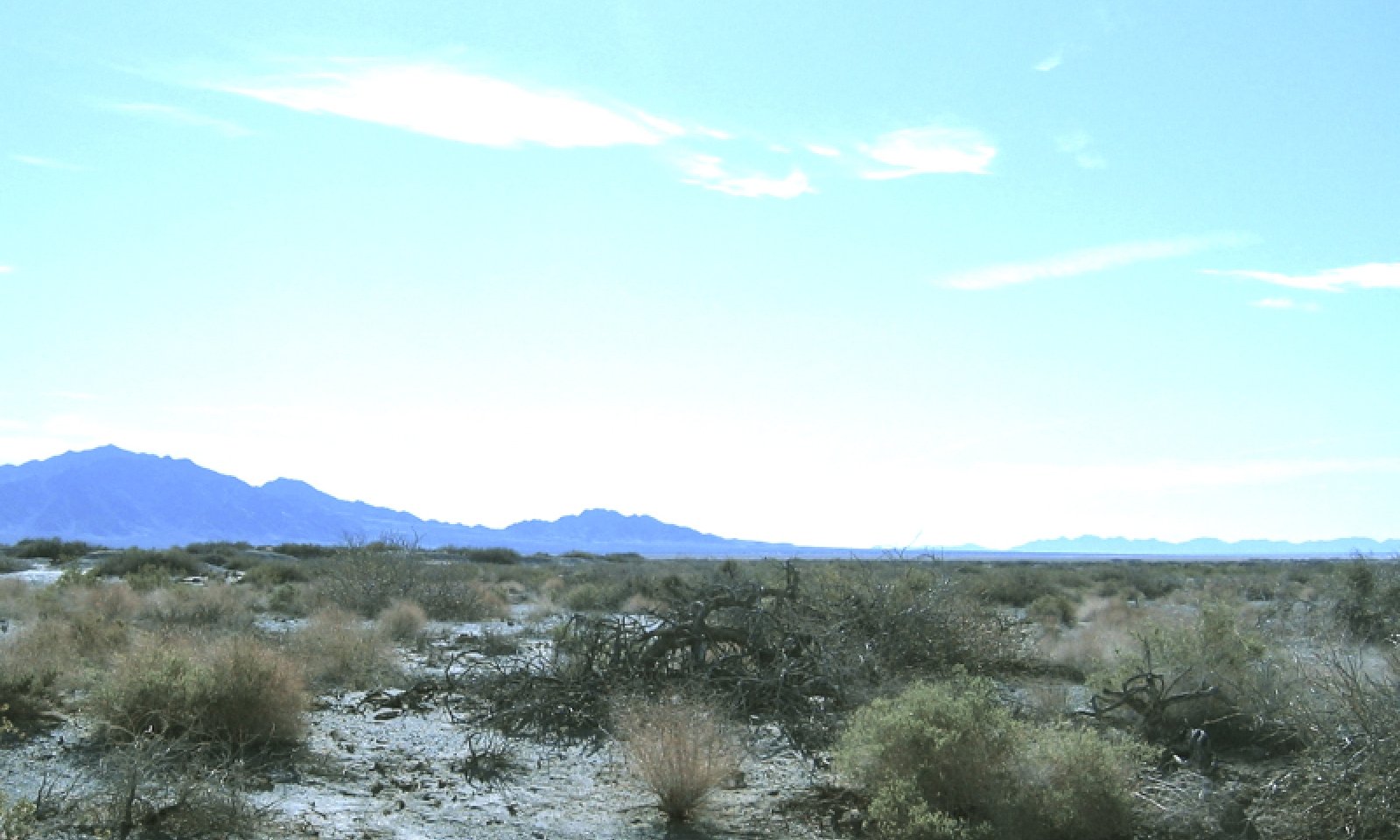
Dune 3-5" P.Z.
Scenario model
Current ecosystem state
Select a state
Management practices/drivers
Select a transition or restoration pathway
- Transition 1 More details
- Transition 2 More details
- Transition 3 More details
- Restoration pathway 1 More details
-
No transition or restoration pathway between the selected states has been described
Target ecosystem state
Select a state
Description
State 1 represents the historic range of variability for this ecological site. This state no longer exists due to the ubiquitous naturalization of non-native species in the Mojave Desert. Periodic drought and wind erosion were the natural disturbances influencing this ecological site.
Data for this State does not exist, but dynamics and composition would have been similar to State 2, except with only native species present. See State 2 narrative for more detailed information.
Submodel
Description
State 2 represents the current range of variability for this site. Non-native annuals, including red brome, Mediterranean grass, Asian Mustard, prickly Russian thistle, and red-stem stork’s bill are naturalized in this plant community. Their abundance varies with precipitation, but they are at least sparsely present (as current year's growth or present in the soil seedbank).
Submodel
Description
This State is characterized by dominance by saltcedar, and a decline in native woody species diversity. Habitat quality for wildlife is reduced. Significant investments must be made to restore reference conditions once this state is reached.
Submodel
Description
This State is characterized by the loss of western honey mesquite, and/or loss of dune and sandsheet stability, with increased rates of wind erosion. This state has been significantly altered from the natural range of variability found in States 1 and 2. Groundwater depletion reduces the ability of the site to support western honey mesquite, leading to a community dominated by fourwing saltbush and Mojave seablight. With additional disturbance, drought, and groundwater depletion, increased wind erosion may the suitability of this ecological site for vegetation, killing established or recruiting individuals by abrasion and burial (Okin et al. 2001). Ongoing disturbance could result in complete loss of vegetation cover.
We do not have data for this State, and further research is necessary to describe the community phases and successional pathways that may exist within the state.
Submodel
Description
This State develops with sand deflation and an accumulation of surface rock fragments. The loss of loose sands decreases habitat suitability for perennial grasses, California croton, and annuals, leading to an upland dominated plant community.
Submodel
Mechanism
This transition occurred with the naturalization of non-native species in this ecological site. Non-native species were introduced with settlement of the Southwest Desert region in the 1860s.
Mechanism
This transition occurs with uncontrolled invasion by saltcedar. Drought can facilitate saltcedar dominance in this ecological site, due to greater drought tolerance in saltcedar than native community dominants (Cleverly et al. 1997, Di Tomaso 1998).
Mechanism
This transition occurs when groundwater depletion reduces the ability of the site to sustain western honey mesquite, and/or when a threshold of the natural cycles of aeolian deposition and erosion are crossed, such as due to extreme drought followed by additional disturbance. Groundwater depletion due to increased urban and agricultural use in the lower Mojave River Valley has led to decline and destabilization of western honey mesquite dominated dunes, and reactivation of aeolian environments in this region (Laity 2003).
Mechanism
Saltcedar can be effectively controlled using a variety of aggressive mechanical and chemical treatments (Shafroth et al. 2005). Saltcedar vigorously sprouts after mechanical disturbance or fire, so removing remaining root and slash material, and/or application of herbicide, and several years of follow-up treatment is essential for control to be effective (Shafroth et al. 2005). Where saltcedar invasion is extensive and severe, i.e. stands are essentially monospecific, control methods include aerial herbicide application followed by burning, and mechanical clearance (bulldozing stands and removing rootstump), followed by burning of slash (McDaniel and Taylor 2003). These methods were found to be 93% and 97% effective (McDaniel and Taylor 2003), however, such intensive methods are very costly, and have tremendous impacts on ecosystem processes (Shafroth et al. 2005). Treatment must also be followed by revegetation and restoration (Shafroth et al. 2005). Where impacts to native species are a concern, and invasion is less extensive, treatment of individuals is the preferred method of control (Shafroth et al. 2005). Cutting of individuals with handsaws or chainsaws, followed by approved National Park Service Integrated Pest Management herbicides is recommended.
Model keys
Briefcase
Add ecological sites and Major Land Resource Areas to your briefcase by clicking on the briefcase (![]() ) icon wherever it occurs. Drag and drop items to reorder. Cookies are used to store briefcase items between browsing sessions. Because of this, the number of items that can be added to your briefcase is limited, and briefcase items added on one device and browser cannot be accessed from another device or browser. Users who do not wish to place cookies on their devices should not use the briefcase tool. Briefcase cookies serve no other purpose than described here and are deleted whenever browsing history is cleared.
) icon wherever it occurs. Drag and drop items to reorder. Cookies are used to store briefcase items between browsing sessions. Because of this, the number of items that can be added to your briefcase is limited, and briefcase items added on one device and browser cannot be accessed from another device or browser. Users who do not wish to place cookies on their devices should not use the briefcase tool. Briefcase cookies serve no other purpose than described here and are deleted whenever browsing history is cleared.
Ecological sites
Major Land Resource Areas
The Ecosystem Dynamics Interpretive Tool is an information system framework developed by the USDA-ARS Jornada Experimental Range, USDA Natural Resources Conservation Service, and New Mexico State University.
